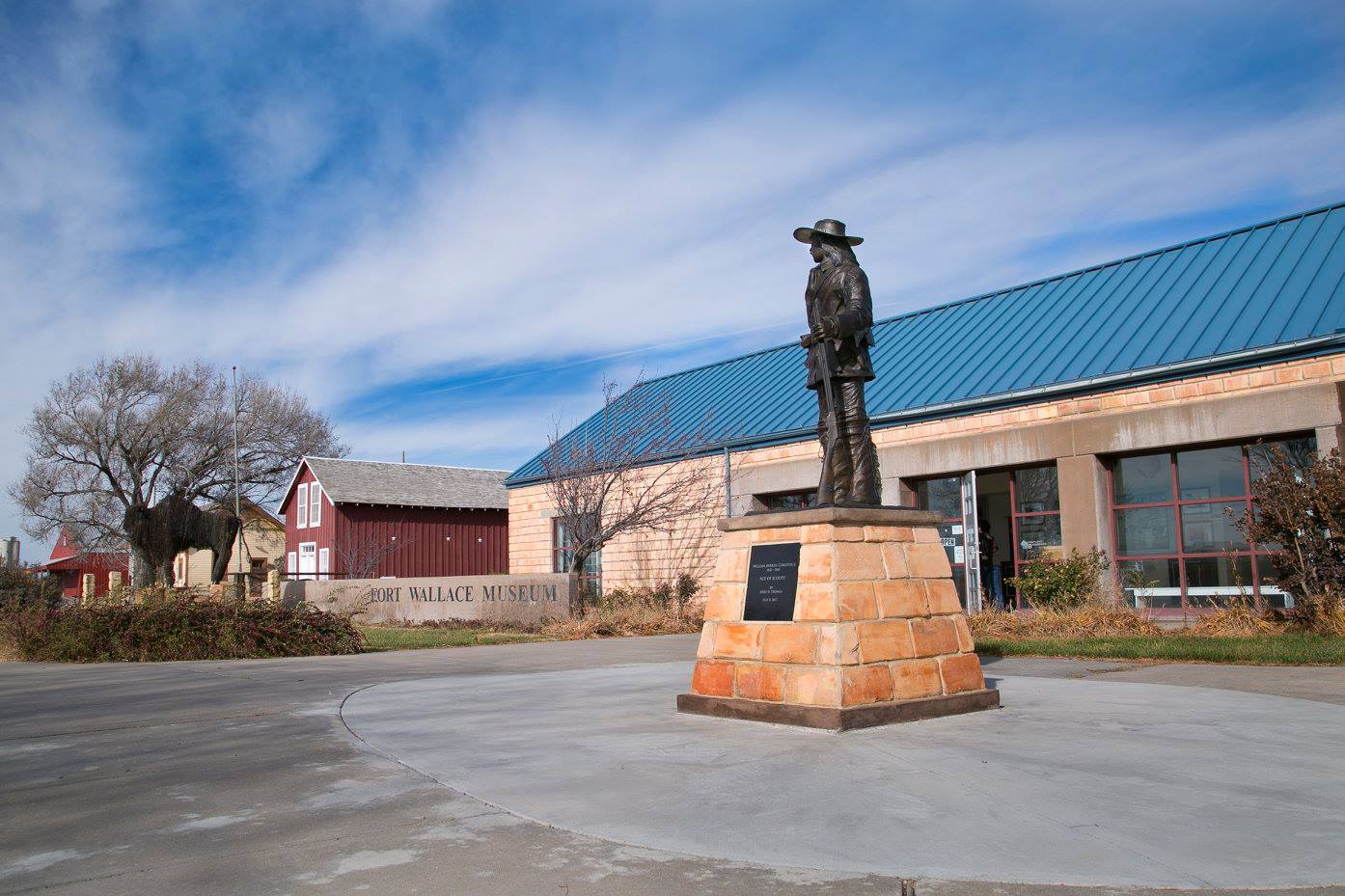
Fort Wallace Museum
Site Information
 Location: North side of US-40 at Wallace, KS
Location: North side of US-40 at Wallace, KS
GPS Coordinates: N 38º 54.610' W 101º 34.975'
Intrinsic Qualities:
![]()
![]()
![]()
![]()
Site Logistics:
- The museum complex includes the main museum building, the Pond Creek Stagecoach Station, the Weskan Depot, and the Sunderland-Poe Building. A sidewalk and footpath connect these buildings.
- All sidewalks and entrances into the museum are ADA-compliant.
- Restroom available
Fightin’est Fort in the West, Fort Wallace, was established in 1865 to protect travel on the Smoky Hill Trail, as well as the construction of the Kansas Pacific Railway across Western Kansas. The area was a hotbed of conflict during the early Indian Wars, as the Cheyenne, Kiowa, and Arapaho people struggled to defend their way of life on the Plains. Today, you can explore this history at the Fort Wallace Museum and its new Milford Becker Addition, where you can climb aboard a real stagecoach and gaze in wonder at a 40-foot swimming plesiosaur fossil discovered by the Fort surgeon in 1867.
Tell me more…
During the period of 1866 – 1881, Wallace was one of the most important towns on the Smoky Hill Trail. Due to the protection of Fort Wallace, the town was an important way station along the Butterfield Overland Despatch, and later, for the Kansas Pacific and Union Pacific Railways. A real cross-roads of the West, this area was populated by such figures as “Wild Bill” Hickok, William F. Cody and William Comstock (who scouted for the cavalry at Fort Wallace). A small replica of the fort is on display within the museum.
This is a major stopping point along the Western Vistas Historic Byway. The museum interprets the history of the area and is an ideal location to distribute information concerning the remainder of the byway (in either direction).
Pond Creek Stagecoach Station: Recently restored with a $90,000 Heritage Trust Fund Grant, the Pond Creek Stagecoach station is one of only two Butterfield Overland Despatch stations remaining in existence. The building is constructed of ponderosa pine which was brought to the Pond Creek site by ox cart in 1865, making it one of the oldest buildings between Leavenworth and Denver.
It was known as a ?home station – meals and protection were provided, along with a change of horses. The trap door located in the floor illustrates how 3 tunnels were built to extend out from underneath the building: stone-covered bunkers at the end of the tunnels were utilized by sharpshooters to prevent Indians from approaching close enough to set the station on fire. With the coming of the railroad and the end of the Butterfield Overland Despatch (BOD) in 1869, the building became the Thomas Madigan store in boomtown Wallace.
The rivalry between Madigan and Peter Roubidoux, who owned the store across the street, was legendary. When Madigan built a new store in 1883, he moved the old one to his ranch, to the north, to become an outbuilding. There it remained until 1960, when Tom‘s son Frank, donated the building to the fledgling Fort Wallace Museum. It was listed in the National Register of Historic Places in 1972.
Sunderland-Poe Building: A red metal structure housing museum artifacts including the following:
-
Barbwire displays
-
Antique fire truck
-
covered wagon replica
Weskan Depot: This depot is one of the few original railroad depots erected in the nineteenth (19th) century. The structure was relocated to the Fort Wallace Museum grounds in the 1960s and contains many artifacts used while in service. Additionally, the building‘s exterior has recently been painted in its original yellow color.
Fort Wallace MuseumHighway 40, Box 53
Wallace, KS 67761
Phone: (785) 891-3564Email: museum@ftwallace.comWeb: ftwallace.com/ Facebook: www.facebook.com/pages/Fort-Wallace-Museum/584255478262543?fref=ts Hours of Operation:Monday – Saturday: 9:00 a.m. – 5:00 p.m.Sunday: 1:00 p.m. – 5:00 p.m.~~NOTE: All times Mountain Time~~